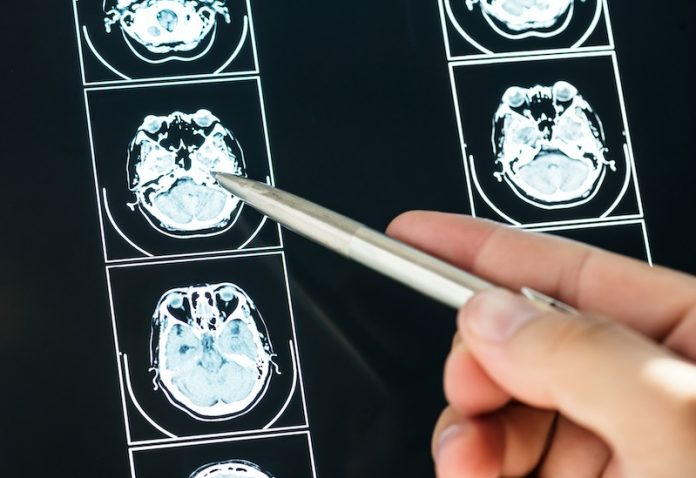
A new artificial intelligence (AI) tool, called FastGlioma, is making brain tumor surgery more precise and faster. This system can identify whether any part of a cancerous brain tumor remains during surgery in just 10 seconds.
The development, led by researchers from the University of Michigan and the University of California, San Francisco, was published in Nature.
When surgeons remove brain tumors, it is difficult to ensure every piece of the tumor is gone. Any leftover tumor, called residual tumor, can cause serious problems, including quicker disease progression and a worse quality of life.
Identifying these small remaining pieces during surgery has been a challenge for years because tumor tissue often looks like healthy brain tissue.
Current methods, such as MRI scans or fluorescent imaging, are useful but have significant limitations.
MRI machines are not available in every operating room, and fluorescent imaging doesn’t work for all tumor types. These challenges have left room for improvement, and FastGlioma may be the solution.
Dr. Todd Hollon, a neurosurgeon at the University of Michigan and one of the study’s authors, explained that FastGlioma works faster and more accurately than traditional methods.
“This technology allows us to detect tumor tissue within seconds, guiding surgeons to remove as much of the tumor as possible while minimizing harm to healthy brain tissue,” he said.
How FastGlioma Works
FastGlioma uses advanced AI called foundation models, similar to technology behind chatbots and image generators like GPT-4 and DALL-E. These models are trained on large datasets to handle various tasks.
To create FastGlioma, researchers trained the AI with over 11,000 brain tumor samples and 4 million microscopic images, using a rapid imaging method called stimulated Raman histology.
During surgery, this imaging technique scans tumor tissue at high resolution, and the AI analyzes it to determine if residual tumor remains.
In a “fast mode,” the system can provide results in just 10 seconds, while a full-resolution analysis takes about 100 seconds. Even in the fast mode, FastGlioma achieves around 90% accuracy, and the full-resolution model performs slightly better at 92%.
In tests with 220 patients who had low- or high-grade gliomas, FastGlioma greatly outperformed traditional methods.
It missed high-risk tumor remnants only 3.8% of the time, compared to a 25% miss rate with conventional techniques. This significant improvement can help reduce the chances of leaving dangerous tumor tissue behind during surgery.
Why It Matters
For years, the rate of leftover tumor after surgery has remained unchanged, despite advances in medical technology.
Residual tumor increases health risks for patients and adds pressure on healthcare systems, which are expected to handle 45 million surgeries annually by 2030. Tools like FastGlioma are vital in addressing these challenges.
The technology is also accessible and cost-effective. It doesn’t rely on expensive MRI machines or fluorescent markers, making it practical for many hospitals.
Researchers believe it can also be adapted to detect other types of brain tumors, such as medulloblastomas and meningiomas, as well as non-brain cancers like lung, breast, and prostate cancers.
A New Era in Surgery
FastGlioma is more than just a tool for brain tumor surgery. It represents a step forward in using AI to improve medical care.
Dr. Shawn Hervey-Jumper, a neurosurgeon at UCSF, said the technology could minimize the need for traditional imaging methods, making surgeries more efficient.
Looking ahead, researchers plan to test FastGlioma in other types of cancer surgeries. Dr. Aditya Pandey, chair of neurosurgery at the University of Michigan, highlighted the potential to apply this AI system to many cancers without requiring major adjustments to the model.
As global cancer care evolves, incorporating technologies like FastGlioma may become essential. It offers a way to make surgeries safer, faster, and more effective, ultimately improving patient outcomes and reducing healthcare burdens worldwide.
If you care about cancer, please read studies about supplement that may increase cancer risk, and can vitamin D help prevent or treat cancer?
For more information about health, please see recent studies about how drinking milk affects the risks of heart disease and cancer and results showing berry that can prevent cancer, diabetes, and obesity.
The research findings can be found in Nature.
Copyright © 2024 Knowridge Science Report. All rights reserved.



